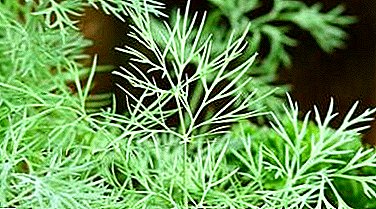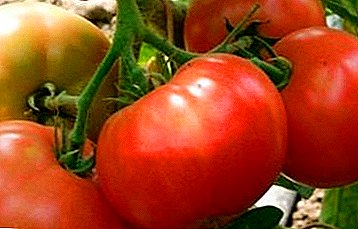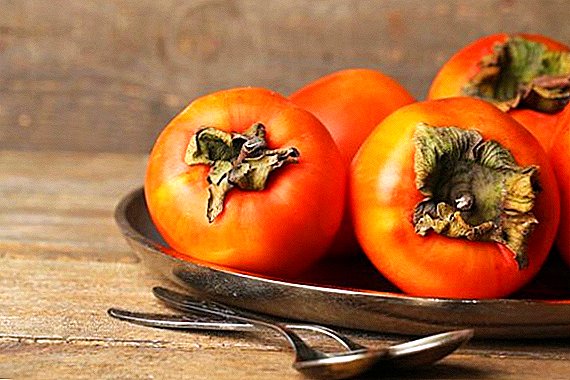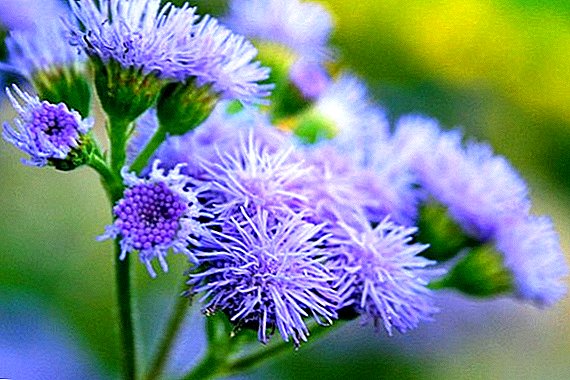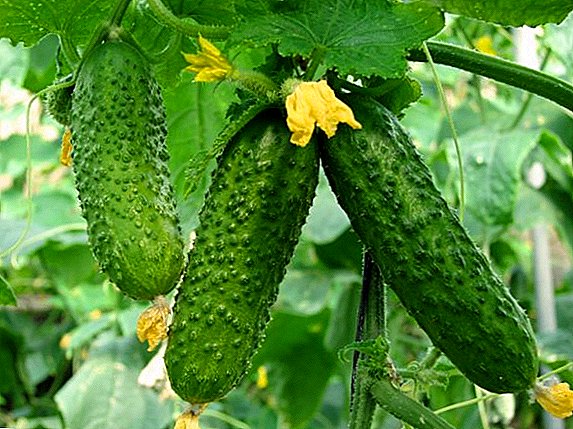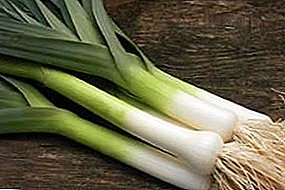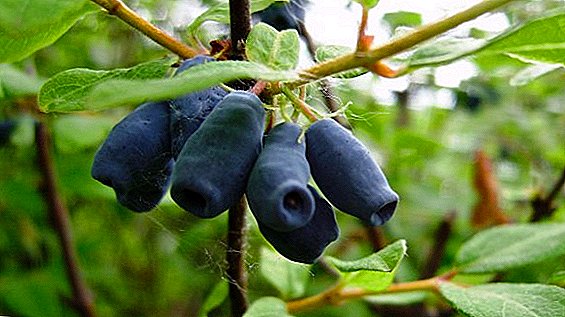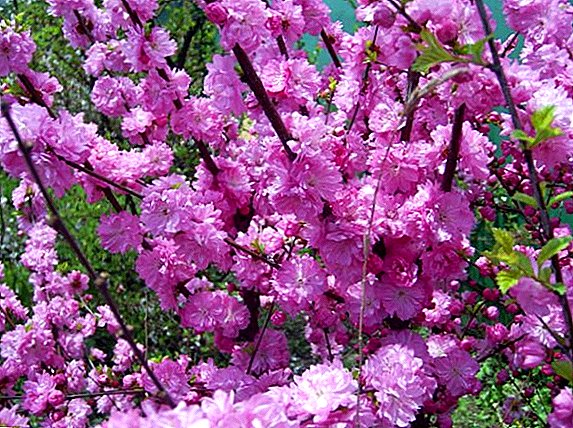 Blooming spring garden fascinates with its beauty. Trees and shrubs, literally boiling in a variety of colors, leave an indelible impression. But even against this background, the three-blade blooming almond looks like a real king.
Blooming spring garden fascinates with its beauty. Trees and shrubs, literally boiling in a variety of colors, leave an indelible impression. But even against this background, the three-blade blooming almond looks like a real king.
Botanical description
Three-bladed almonds (another name is three-bladed luisings) belong to the genus Plum (Prunus), belonging to the Rosaceae family. Previously, this type of botany was distinguished into a separate genus of Louiseania. His homeland is China and Korea.
Did you know? According to one version, the word "almond" comes from the Greek "amygdalos", which means "beautiful tree".This is a bichromatic flowering plant, it is found in the form of a shrub, and in the form of a small tree. Its height can reach 5 meters. The leaves are ovate, implicitly three-lobed at the ends. Terry flowers reach 5 cm in diameter. They come in a variety of shades, from light pink to crimson. Flowering begins in May and can last up to 2 weeks (it depends on the particular plant variety). Fruits are red, round, belong to the type of "drupe", in temperate latitudes they may not ripen. They are inedible.
Inedible fruits also have plants such as honeysuckle and ficus.

Forms and varieties
This species has long been cultivated as an ornamental plant. On the basis of the wild-growing species, many varieties with differently colored flowers and with a different flowering period have been developed.
Luiseania forms
For garden decoration, landscape designers and gardeners have the opportunity to choose one of two existing forms of luiseania - a tree or a shrub. Both forms have strong branching.
Popular varieties
Perhaps the most popular in our latitudes grade is "Captivity." It is a shrub reaching two meters in height. Flowers gustomahrovye pink. Flowering lasts about ten days. Variety "Joy" can be both a tree and a shrub. At the time of flowering, this variety of almond is covered with large dark pink flowers. "Joy" refers to the early varieties, the plant begins to bloom in April. Interesting variety "Snow Uemury". This is a tree or shrub, reaching a three-meter height. Its large double flowers initially have a soft pink color, which is gradually replaced by a cream.
Did you know? Grade "Snow Uemura" named after the famous Japanese single traveler, who died while climbing Mount McKinley - the highest peak of North America.
Very beautiful bright colors are different grade "Crimson". They have a rich crimson color. The plant itself has the shape of a low bush with straight shoots. Variety "Vesnyanka" looks like a plum tree. In the spring it is covered with large beige-pink flowers. Its remarkable feature is high resistance to monilial burn (moniliosis).
Where Almonds Grow
Three-lobed almonds are quite sensitive to the choice of planting place, for the normal development of the plant and simplification of further care it is necessary that such a place meets certain criteria. These criteria are the same for both forms of almond - tree and shrub.
Choice of location and lighting
The almond planting area should not be flooded in the spring; besides, the high level of ground waters is extremely undesirable. It is also necessary that the place was sunny and protected from the wind.

Growing soil
Optimal for the plant is a light loamy soil with weak alkaline reaction. The least suitable for him is heavy clay soils.
Planting rules seedlings
For planting are considered the best three-year seedlings. For their planting prepare pit about half a meter depth. For better drainage, the bottom of the pit is covered with 15 cm of gravel or coarse gravel and 200 g of lime are added to it. The roots of the plant are covered with a mixture, the components of which are 3 parts of leafy ground, 2 parts of humus and one part of sand. The soil around the tree is slightly tamped and watered abundantly.
And for planting such plants as viburnum, shadberry, pear varieties "Veles" and "Rogned", it is also better to use three-year seedlings.
It is possible to plant seedlings both in the spring, and in the fall. In the spring they are planted when setting enough warm weather, when there is no risk of frost. In the fall, planting is done after leaf fall. Autumn planting is considered the best option. When planting several trees or shrubs, the distance between them is kept at least three meters.
Plant propagation
There are quite a few ways to reproduce the three-bladed almond, a gardener has plenty to choose from. Consider these ways.
From bones
With this method of reproduction, the fruit of both the tree and the shrub is used. Almond fruit pit is planted in open ground. Planting pits produce in the groove depth of 10 cm, at a distance of 10-12 cm from each other. After dropping with earth and watering, planting material does not need further care.
After the emergence of seedlings, the earth around them is loosened and weeded. The shoots are transplanted to a permanent place when they reach about 50 cm in height. At the same time, on the stem section 10 cm from the root collar, all lateral shoots that have appeared are cut off. It is possible to plant bones both in late autumn and in early spring. During spring planting, the bones are stratified — kept in a refrigerator at 3-5 ° C for approximately four months.
From cuttings
Procurement of cuttings produced in the second half of June. To do this, cut lignified apical shoots. They must contain two knots, the length of the cutting is 15-20 cm. Next, cuttings are placed for 24 hours in a growth stimulator solution, then planted (cuttings are stuck into the substrate) in a greenhouse. Used for rooting substrate of sand and peat in a ratio of 1: 2. Sufficiently developed roots are formed after 3-4 weeks, after which the cuttings are moved to open ground, where they develop to the desired condition, after which they are transplanted to a permanent place.
From the layering
The procedure for reproduction by layering begins in early spring, before the plant awakens from its winter dormancy. The flexible lower branches of the plant are bent to the ground and fixed in this position. The point of fixation is sprinkled with soil, later on, it is taken care of as an ordinary sapling — they loosen the ground around it and water it. A year later, the layers take root, it can be separated from the parent plant and transplanted to a suitable place.
Such plants as plum, currant, Kampsis, fir, viburnum, gooseberry, heather and cotoneaster reproduce by layering.
Inoculation
This breeding method is used in the spring or in August. For stocks choose resistant to cold varieties of almonds. The use of plum, thorns or plums also gives good results. For the graft, use a straight stalk of almonds with formed eyes and cut leaves.
The stock is cleared of dirt and a T-shaped incision is made on the bark above the root collar, the cut bark is folded back, a so-called "shield" is placed there, it is pressed against the bark and ground with adhesive tape for reliability. A flap is a patch of bark cut from a graft that contains a kidney. It must fit completely under the bark of the stock. If the vaccination took place in the spring, then after the kidney is taking root, the tape is removed. In the case of a summer vaccination, the tape is left until spring.
Important! It is believed that the most beautiful flowering in the early varieties of three-blade almond, it begins before the appearance of the leaves. In late varieties, flowering begins with the appearance of young leaves and lasts much longer than that of the early ones - up to 16 days.
Care for three-lobed almonds
Almond care is easy, but should be regular. The first loosening of the soil around the trunk should be done at the end of March. This procedure must be repeated another 3-4 times throughout the growing season. In addition, weeds should be regularly removed around the plant.
Watering
Almonds are a drought-resistant crop, but despite this, it is better bearing fruit and grows with regular and sufficient irrigation. If the plant is planted and grows in sandy soil, then it should be watered more often than plants planted on normal soils. .
.
To drought-resistant crops also include chumizu, raspberry hussar and army.
Watering should be done when the top layer of the soil dries out by about 1-1.5 cm. Then a bucket of water is poured into the near-stem circle. It must be remembered that waterlogging may lead to rotting of the roots. Seedlings are watered more often, about once every 10-15 days. If there is no possibility to water the almonds throughout the growing season, then you should try to organize regular watering at least in spring and autumn.
Top dressing
Regular top dressing allows you to achieve the most spectacular flowering of three-blade almonds. With the onset of spring, each tree or shrub should be fed with a solution of 1 kg of manure and 20 g of ammonium nitrate, which is diluted with 10 liters of water. In the fall, it is advisable to add potassium sulphate under the rhizomes of almond in a blend with double superphosphate - approximately 20 g per 1 square meter. m. In addition, in the fall need to trim annual shoots that did not have time to stiffen.
Pruning
Pruning, both preventive and decorative (cutting flowering shoots for bouquets), almonds tolerates well. Formative pruning should be done after the plant has faded. It is necessary to cut off annual shoots, as well as diseased and not given full flowering branches.
Important! This species is not so sensitive to frost (can withstand and -30°C), as to frequent long thaws, during which the flower buds swell. With a further decrease in temperature, these buds may die.
Diseases and pests
The main pests of almonds are leafworm and aphid. The wisp can be overcome with the help of chlorophos solution (concentration 0.15-0.3%) by spraying the tracks. Against aphids, a solution of household soap is good at the rate of 200-300 g of soap per 10 liters of water. This solution is sprayed with leaves affected by aphids.
The real scourge of almonds is the dangerous fungal disease moniliosis (aka monilial burn), for the fight against which plants are sprayed with Bordeaux liquid every 15-20 days. In addition to this scourge, this species tends to ache with gray rot, which can be eliminated only by cutting off the affected branches in the winter or spring, immediately after the flowering period. With this disease, it is important to prevent the emergence of sporospace pads.
So, three-lobed almonds can not be called unpretentious plant. A grower encounters certain difficulties in growing it: sensitivity to long thaws and overmoistening, susceptibility to certain diseases. However, these difficulties are quite surmountable, and otherwise, planting and caring for this ornamental tree or shrub is simple. The reward for the efforts will be its magnificent, unforgettable spring flowering.


